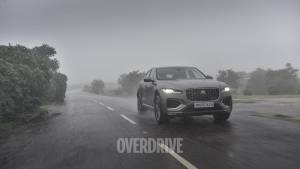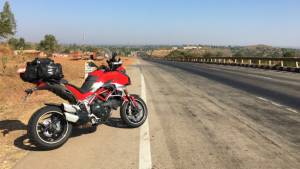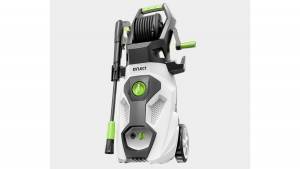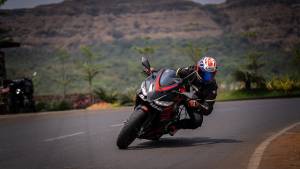Better Riding: From track to street
Races tend to happen at racetracks, but the track is a bigger place than that. It is a controlled environment where you use the same piece of unchanging tarmac again and again. This means if you can remember what you are doing, you can directly compare your actions across laps and see what works or doesn't, and whether you are getting better at it or not. While that liberty rarely applies on the street, one aspect of this does overflow. Racers and serious track day riders invariably possess a vast amount of information about the track, the surface, grip levels and so forth. This works for me on the street as well. I find that the more effort I make to remember surfaces, hazards, typical traffic patterns and other related information, the faster and safer I can be using that knowledge. Obviously, this doesn't really apply when you are riding an unknown road, but I would be very surprised if you told me that a large part of your riding doesn't happen on well-trodden paths.
Second, you quickly learn at the track that to go faster, you must slow down for corners more, to gain more speed out of them. On the street, this principle also works, but in a slightly different way - it makes you safer if not always faster. The idea is simple - lap times comes from high speeds everywhere and in its shortest form, entering slow and then getting on the throttle earlier gets you more speed down the straight and hence quicker lap times. On the street, slowing down for corners also gives you time to deal with the variables of the street - a vehicle that has crossed the centre line and in your part of the road, a sudden pothole or patch of dust and so forth. On the track, we say nail it as soon as you can find the grip to use all that power. On the street we say open the throttle in earnest once you can see the exit of the corner, and use all the power at your disposal.
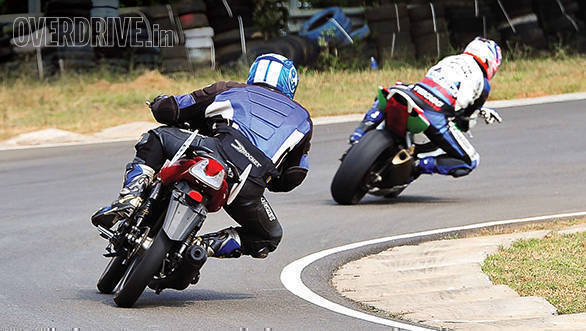
If you use even a 250cc motorcycle on the street, its performance is already enough to get you into serious trouble. This is where another clever mind-hack from the track comes to your rescue. Racers use a number of vision tricks to slow down the sense of speed and allow their brains to cope. Most of these apply to street riding as well. The first one is to have a high horizon - which means looking up and further ahead than usual and using your peripheral vision to fill in the rest of the information. This can be disorienting initially in traffic, but it works beautifully, slowing down traffic for your mind, and allowing you to make more considered, calm decisions in the same amount of time. The second is to always look exactly where you want to go. The subconscious tendency for us to make inputs that take the motorcycle where we are looking are a racer's tool. They look hard at the turn-in point, the apex and the exit point of each corner in timed, rapid succession to ensure the motorcycle takes the chosen line. This again, works brilliantly on the street, stop looking at cars (consciously) and focus instead on where you would like to be - in the space beside it, or ahead of it and you will find that your safety margins in traffic increases automatically. You are always going where you are looking, so if you are looking at the idiot dodging lanes ahead of you, closer to that hazard is where you are slowly heading.
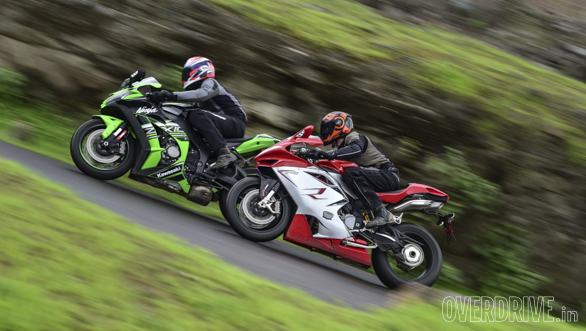
But perhaps the most critical skill you learn at the track is to anticipate what is about to happen. Being able to predict the next sequence of events brings you smoothness, calm and eventually speed. I cannot emphasise enough how important anticipation is to being a great, safe rider in urban traffic. All of the skills I have used successfully on the street are subsets of your ability to look ahead, look in your mirrors, pick up information on what is going on around you, decide your next move and then execute it smoothly. And the greatest riders of them all are those who can comprehend these patterns, and figure out where they need to be next to either avoid a hazard or save a little more time. The best place to learn these skills is obviously the racetrack. But if you keep these concepts in mind when you are out riding next, you might remember to apply them!
For more Better Riding stories, click here
Related Stories
Top Stories
Latest Videos
Most Popular
- Budget Sportbike Showdown: Kawasaki Ninja 500 vs Aprilia RS 457 vs Yamaha YZF-R3
- 2014 Triumph Daytona 675 vs 2024 Kawasaki ZX6R - A Decade of Evolution in Supersport Motorcycles
- Mumbai-Pune Expressway speed restrictions updated
- 2024 Hyundai Creta vs Toyota Urban Cruiser Hyryder vs Skoda Kushaq comparison review - the hype is real?
- Nissan Magnite EZ-Shift review - is the AMT any good?
